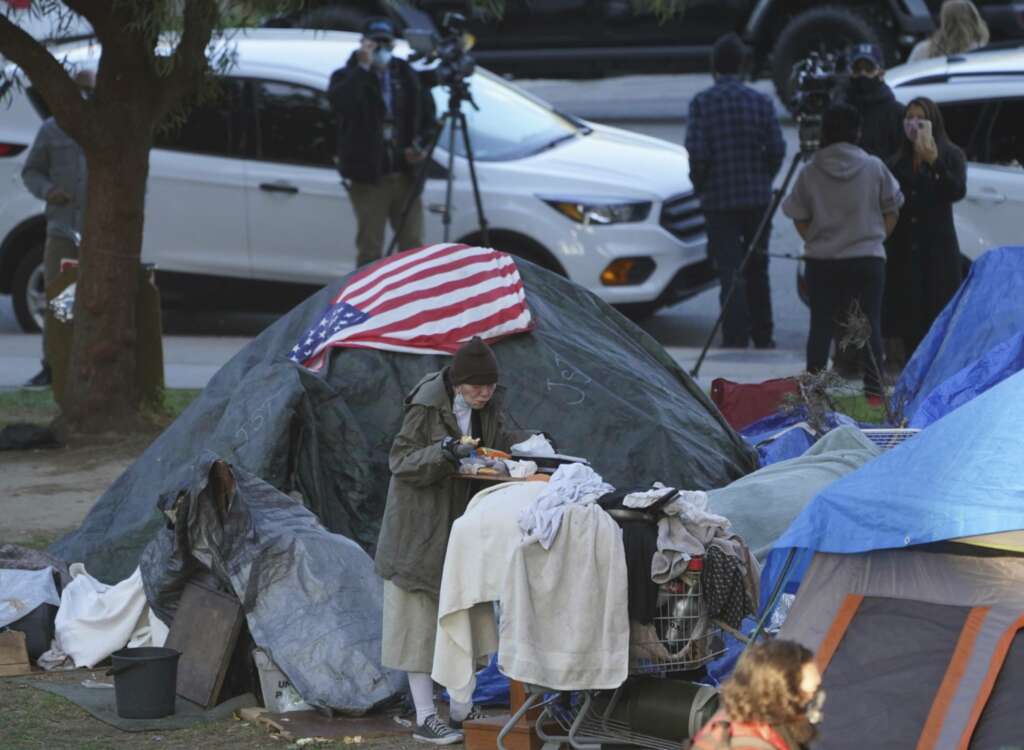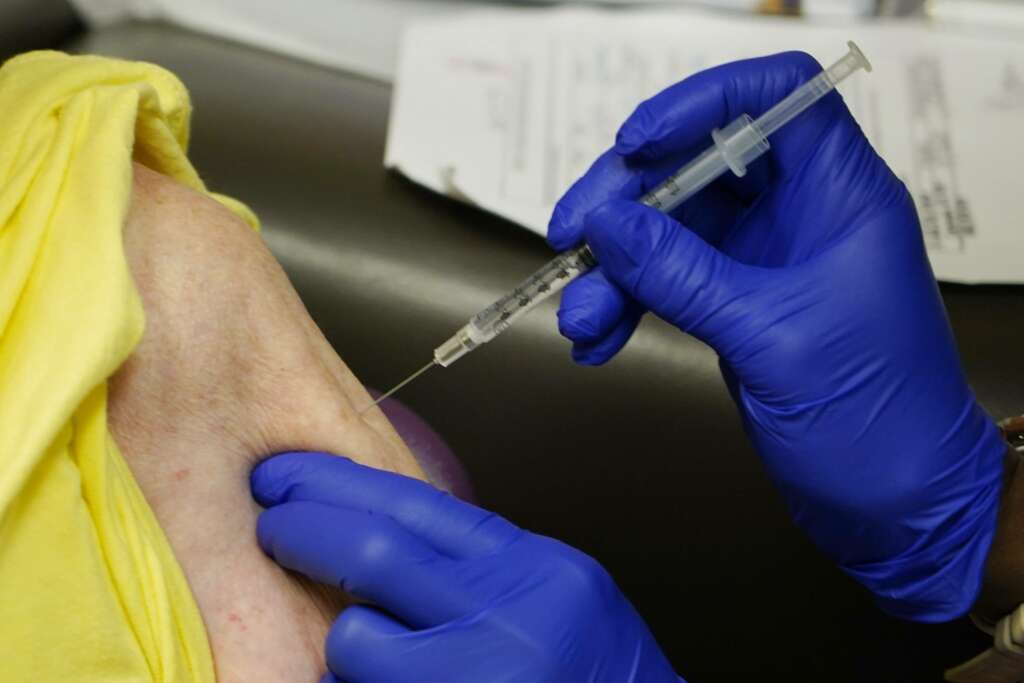
SAN DIEGO (AP) — Buoyed by a large budget surplus and swimming in federal pandemic recovery money, California Gov. Gavin Newsom on Tuesday proposed $12 billion to get more people experiencing homelessness off the streets and into homes of their own.
Newsom’s proposal includes $8.75 billion over two years to create an estimated 46,000 housing units, expanding on a program he launched last year to convert motels and other properties into housing. Nearly half the money would go toward housing in places where people with mental health and other behavioral issues can get services onsite.
Newsom also proposed spending $3.5 billion on rental subsidies, new housing and shelter with the aim of ending family homelessness within five years. It would help families with minors avoid losing their homes in the first place or help them get sheltered without spending days, weeks or months on a waitlist.
“As governor I actually want to get something done. I don’t want to talk about this for a decade,” Newsom said in a news conference at a former San Diego Residence Inn that has been converted into housing for 177 previously homeless people.
“What’s happening on our streets and sidewalks is unacceptable,” he said.
The Democratic governor, who faces a recall election this year, seized on the twin issues of homelessness and housing affordability early on in his first term as governor. The nation’s most populous state has an estimated 161,000 people experiencing homelessness, more than any other state. Advocates say they can’t house people quickly enough with a shortage of units and high rents.
The largest concentration of homelessness is in Los Angeles, where Mayor Eric Garcetti last month vowed to spend nearly $1 billion to move some of the 61,000 homeless people in Los Angeles County off the streets. Rows of tents, cardboard shelters, battered RVs and makeshift plywood structures have now expanded beyond the notorious Skid Row throughout the nation’s second-most populous city.
During the pandemic, Newsom launched projects “Roomkey” and “Homekey” using federal money to house homeless residents in hotels and helping cities, counties and other local entities buy and convert motels and other buildings into housing. Newsom officials said $800 million spent on the Homekey program created 6,000 more housing units, providing shelter for 8,200 people.
One of them is Lindsey Prescott, who made an unplanned appearance at Newsom’s news conference after her 18-month-old daughter Mia waved at the governor when he arrived at a converted Residence Inn operated by Father Joe’s Villages.
Prescott said she was homeless for five years, struggling with addiction after her mother died, and lost her daughter to foster care. She said she got Mia back in May after she stopped using drugs and was selected to move into the former hotel.
“I feel normal,” said Prescott, as Mia darted around an interior patio next to a tennis court. “I’m a mom. I have my daughter. She has her crib next to my bed. I go to the grocery store. I cook.”
Prescott expects to stay at the converted hotel for two years, then move to an apartment or house. There is no limit to how long people can stay at Father Joe’s, and some may choose to live permanently.
Nan Roman, president and CEO of the National Alliance to End Homelessness, called Newsom’s hotel and motel programs gamechangers that took advantage of the pandemic to make real changes. A topsy-turvy real estate market and the federal government throwing money at local governments makes it an ideal time to expand housing, she said, but lots of coordination is needed on things such as rental subsidies and ongoing care to make sure people don’t end up back on the streets.
Advocates cheered the governor’s proposal. But they voiced concerns about California’s decades-old resistance to building new homes: politics, long-term funding issues, neighborhood opposition and political jockeying.
“If we couple it with actually taking steps to close our affordable housing gap, it could be good,” said Dr. Margot Kushel, director of the Center for Vulnerable Populations at the University of California, San Francisco. “The people who are homeless right now do need a response today, and not five years from now.”
Focusing on homelessness could prove politically helpful for Newsom in the recall campaign. Republican challengers, including John Cox and former San Diego Mayor Kevin Faulconer, issued statements calling Newsom ineffective.
If Newsom’s plan wins support from the state Legislature, its implementation would depend heavily on the willingness of local governments and communities to go along, which is often a significant barrier.
“Every community group that you go to demands that you solve the problem of homelessness, and then in the exact same meeting they’ll demand you don’t solve it anywhere near them,” said San Diego County Supervisor Nathan Fletcher, a fellow Democrat who appeared with Newsom.
The governor’s proposal is part of a $100 billion pandemic recovery plan Newsom is rolling out this week, thanks to an astounding $76 billion budget surplus and $27 billion in new funding from the federal government’s coronavirus spending bill.
A new state database shows that nearly 250,000 people sought housing services in 2020. Of that number, 117,000 people are still waiting for help while nearly 92,000 people found housing.
___
Har reported from San Francisco. Associated Press writers Kathleen Ronayne in Sacramento, California and Christopher Weber in Los Angeles contributed to this story.
Copyright © 2021 . All rights reserved. This website is not intended for users located within the European Economic Area.



